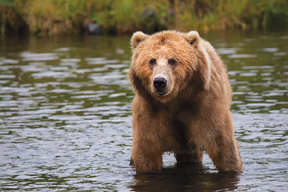
April 2021
Dear EarthTalk: Given the economic slowdown around the world due to the coronavirus in 2020, was there a positive impact on climate change? ~ M. Stiles, Meriden, CT
The coronavirus pandemic has certainly led to a decrease in industrial activity and resulting greenhouse gas emissions during its reign over the planet in 2020. A recent study by German researchers calculated that global carbon dioxide emissions fell by about eight percent over the past year. While this is no doubt a good result from an otherwise bad situation, the researchers warn it represents nothing but a small drop in the bucket compared to what we still need to accomplish—even bigger annual emissions drops every year for decades to come—to avert cataclysmic climate change.
According to study co-author Ralf Sussmann, we would need to achieve zero emissions around the world by 2055 to limit global warming at 1.5ºC. The declining rate of greenhouse gas emissions during the global pandemic would not only need to be upheld, it would need to be amplified to achieve zero emissions. Sussmann and other study authors stated that to achieve these reductions “political measures have to be taken to directly initiate fundamental technological changes in the energy and transport sectors.”
Despite the drop in emissions over this past year, 2020 will likely go down in history as the year things started to really accelerate with regard to climate change’s effects. Recent increases in both the frequency and intensity of extreme weather events are consequences of global climate change. “Global warming can contribute to the intensity of heat waves… Increasing temperatures mean a longer wildfire season,” reports the National Academies of Sciences, Engineering, and Medicine. “Global warming also increases water vapor in the atmosphere, which can lead to more frequent heavy rain and snowstorms.” This means stronger hurricanes and flooding.

In 2020, extreme weather events plagued people around the world amid the pandemic. In the U.S. alone, Americans witnessed orange skies clouded with smoke and a number of powerful hurricanes coming from the Atlantic. Globally, there have been record high average temperatures, double the activity of a normal hurricane season, the hottest temperature ever reliably recorded in human history (54ºC), the most costly damages from flooding to date in China, record low Arctic sea ice, and the strongest tropical cyclone to hit land that has ever been recorded (Super Typhoon Goni). These abnormally extreme weather events are all indicators of the accelerating effects of climate change on our planet.
Even though climate change continues to worsen, in small ways all over the world nature has taken this economic slowdown as a chance to breathe. For example, the murky waters of Venice’s canals became clearer than they had been in decades—and sea life even returned to the city’s urban waterways. While global warming has not stopped because of the global pandemic, we have learned that Mother Nature responds positively to our improved behavior (even when not intended), which gives environmental advocates hope to keep on working. It’s now up to every one of us to make significant changes in our own orbits—perhaps by keeping up our slower and more stationary existences even after we have a grip on coronavirus—if we hope to mitigate and reverse the effects of climate change.
CONTACTS: “Can We Measure a COVID-19-Related Slowdown in Atmospheric CO2 Growth?” mdpi.com/2072-4292/12/15/2387; “Global warming is contributing to extreme weather events,” nationalacademies.org/based-on-science/climate-change-global-warming-is-contributing-to-extreme-weather-events.
Dear EarthTalk: What’s the latest on efforts to reintroduce Grizzly bears back to the Lower 48? ~ J. Whitaker, silver Spring, MD
Grizzly bears, once a common sight in the Lower 48, were hunted and killed to near extinction over the century that followed colonialism. Today, these majestic, lumbering creatures are the focus of many restoration efforts in the United States.

Grizzlies are an important part of the ecosystems they typically inhabit. They aerate soils in the meadows where they dig, distribute plant seeds across the forest floor after eating fruits and nuts, and are a keystone species given their position at the top of the food chain—i.e., if Grizzly populations are suffering, so must be other wildlife populations in the region. In addition to their ecological importance, Grizzly bears also hold a great cultural value for many Native American tribes and Canadian First Nations.
Before colonizers came into the Americas from abroad, scientists think some 50,000 Grizzly bears lived between the Pacific coast and the Great Plains. According to the non-profit Western Wildlife Outreach, Grizzlies were eliminated from 98 percent of their original range in the contiguous U.S. between 1850 and 1970. Sport hunting, fur trading, farming, and the fact that until the mid-20th century, most of these bears would be shot on sight, nearly eradicating them entirely. Today, fewer than 1,400 Grizzlies remain in the Lower 48, most of them in and around Yellowstone National Park. Trace DNA evidence shows a small number (less than five) live in and around North Cascades National Park in Washington State.
All of these populations are seeing positive growth trends in recent years due to restoration efforts by environmental groups, indigenous activists and wildlife biologists. But it’s an uphill battle managing existing protected habitat for ideal Grizzly conditions while keeping livestock ranchers around the periphery of Yellowstone from unloading their rifles at their first sight of a Grizzly’s signature hump.
And like many other animal species, Grizzlies now face a new threat: climate change. Their populations have been migrating farther north, and have been encountering another competitor: Polar bears, which. have had viable offspring in areas where the two species have population overlap. Unfortunately, the rapid changes that are accompanying climate change will be difficult to overcome for even a Grizzly bear.
“There are only a couple Grizzly bear populations that are viable in the United States. Says Wendy Keefover from the Humane Society of the United States: “There are just these tiny islands of Grizzly bear populations left. They need far more protection, not less.”
Active work in restoration continues to be extremely important to American ecosystems for these cornerstone populations. To help with Grizzly bear restoration, visit the website of the Friends of the North Cascades Grizzly Bear and add your name to their list of “Friends of the Grizzly” to receive updates on the campaign that has been pushing for more federal efforts to protect the iconic bears.
CONTACTS: Friends of the North Cascades Grizzly Bear, northcascadesgrizzly.org; NPCA’s “Support Grizzly Bear Recovery in the North Cascades,” npca.org/advocacy/53-support-grizzly-bear-recovery-in-the-north-cascades; Interagency Grizzly Bear Committee’s “Current status of threatened Grizzly bear populations and their recovery,” igbconline.org/conserving-grizzly-populations-2/; Western Wildlife Outreach’s “Grizzly Bear History,” westernwildlife.org/grizzly-bear-outreach-project/history/.
______________________________________
EarthTalk® is produced by Roddy Scheer & Doug Moss for the 501(c)3 nonprofit EarthTalk. See more at https://emagazine.com. To donate, visit https//earthtalk.org. Send questions to: question@earthtalk.org.

